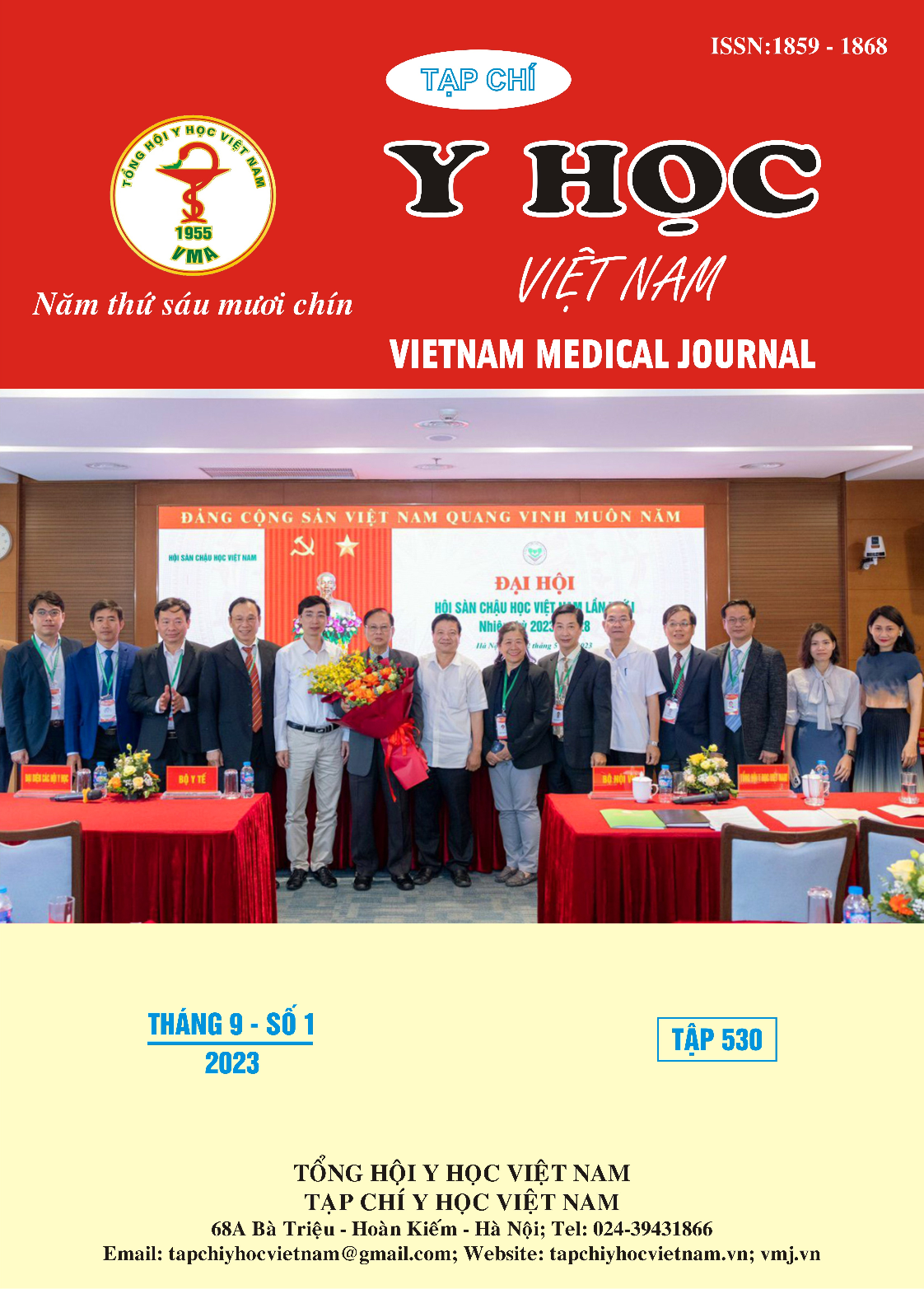RESULTS OF TREATMENT OF PROXIMAL FEMORAL NAIL ANTIROTATION IN INTERTROCHANTERIC FRACTURE WITHOUT AN ORTHOPEDIC SURGICAL TABLE AT THONG NHAT HOSPITAL
Main Article Content
Abstract
Objective: to evaluate the results of treatment of proximal femoral nail anti-rotation (PFNA) in intertrochanteric fracture without an orthopedic surgical table at Thong Nhat Hospital. Subjects and methods: a retrospective, descriptive, non-randomized study was conducted on 28 patients who has intertrochanteric fracture treatment with PFNA. Results: the majority of patients are females aged above 60 years old, often due to a life-related accident, the follow-up period is at least 3 months, and the longest is 6 months, assessed by the Harris scale as positive: good and very good, reaching 90.4. ± 4.3, average blood loss 324.4 ± 145.7, and patients can walk with a support frame after 5-10 days. Conclusion: intertrochanteric fracture surgery with PFNA in the lateral decubitus position without using an orthopedic table also has many similar advantages compared to the supine position using an orthopedic table.
Article Details
Keywords
intertrochanteric fracture, proximal femoral nailing anti-rotation (PFNA), orthopedic surgical table.
References
2. N. Veronese và S. Maggi (2017), "Epidemiology of Hip Fracture and Social Costs", Orthogeriatrics, tr. 19-30
3. N. Adulkasem, P. Phinyo, J. Khorana, D. Pruksakorn, and T. Apivatthakakul, “Development of clinical prediction rules for one-year postoperative functional outcome in patients with intertrochanteric fractures: the intertrochanteric fracture ambulatory prediction (IT-AP) tool,” International Journal of Environmental Research and Public Health, vol. 19, no. 1, p. 177, 2021
4. Li Xue, Li Zha, Qin Chen, Yi-jian Liang, Kang-ren Li, Zheng Zhou, Jin-long Guan,Hui Qin, and You-ping Li, "Randomized Controlled Trials of Proximal Femoral Nail Antirotation in Lateral Decubitus and Supine Position on Treatment of Intertrochanteric Fractures", Clinical Study of Hindawi Publishing Corporation, The ScientificWorld Journal, Volume 2013, Article ID 276015, 7 pages, http:// dx.doi.org/ 10.1155/2013/276015
5. Kempf I, Grosse A, Taglang G, Favreul E. Gamma nail in the treatment of closed trochanteric fractures. Results and indications of 121 cases. Orthop Traumatol Surg Res. 2014 Feb; 100(1):75-83. doi: 10.1016/ j.otsr.2013.12.013. Epub 2014 Jan 20. PMID: 24456767.
6. I. Aktselis, D. Papadimas, E. Fragkomichalos, A. Deligeorgis, and C. Kokoroghiannis, “Intramedullary nailing of trochanteric fractures—operative technical tips,” Injury, vol. 43, no. 6, pp. 961–965, 2012
7. Pastor, I. Zderic, D. Gehweiler et al., “Biomechanical analysis of recently released cephalomedullary nails for trochanteric femoral fracture fixation in a human cadaveric model,” Archives of Orthopaedic and Trauma Surgery, 2021
8. Sadic S, Custovic S, Jasarevuc M, Fazlic M, Krupic F. Proximal Femoral Nail Antirotation in Treatment of Intertrochanteric Hip Fractures: a Retrospective Study in 113 Patients. Med Arch. 2015 Dec;69(6):352-6. doi: 10.5455/medarh.2015.69.353-356. PMID: 26843723; PMCID: PMC4720467.
9. Zhengbing Su, Minghui Yang, Gang Luo, Linlin Liang, and Yong Hao, "Treatment of Elderly Femoral Intertrochanteric Fracture by InterTan Intramedullary Nail and PFNA" Research Article Hindawi, Evidence-Based Complementary and Alternative Medicine, Volume 2022, Article ID 5020960, 7 pages, https:// doi.org/10.1155/2022/5020960


